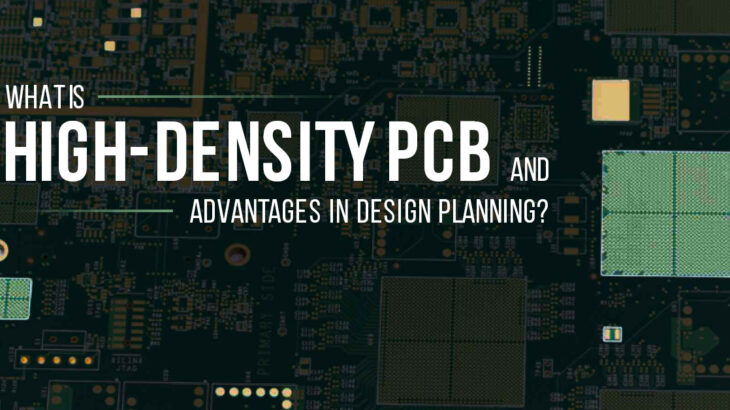
The electronics industry constantly pushes its boundaries to develop smaller, lighter electronic products. Consumer satisfaction is often linked to the reduction in device size and weight, making many product engineering companies offer innovative and compact PCB design services. However, this can be achieved by implementing high-density interconnect PCB technology. Unlike conventional PCB design, high-density PCB design offers superior dimensions, weight, and performance advantages. In this blog, we will see what high-density PCB is and the advantages associated with the design planning of the same.
What Are High-Density PCBs?
The rapid growth of high-density interconnect (HDI) technology has brought a revolutionary change in the PCB industry and broadened the electronics market. Compared to standard printed circuit boards (PCBs), HDI incorporated boards offer a higher wiring density per unit area. This increased density is possible using various features and techniques such as micro vias, blind and buried vias, sequential laminations, thin lines and spaces, and via-in-pad techniques.
HDI boards provide several advantages, including lightweight construction, compactness, and cost-effectiveness. These benefits are achieved by incorporating advanced technologies into their design and manufacturing processes. By leveraging technology and lamination, the electrical performance of circuits on HDI PCBs is significantly enhanced.
With their ability to accommodate more circuitry within a smaller form factor, HDI boards have become crucial in developing modern electronic devices. They enable the creation of smaller, lighter, and more efficient products, supporting advancements in various industries such as consumer electronics, telecommunications, automotive, and medical devices. The continuous advancements in HDI technology promise to revolutionize the PCB industry further and drive innovation in electronic product design and manufacturing.
Benefits Of Incorporating High-Density PCBs:
Larger Area:
The area of a normal PCB can vary depending on the specific design and application. However, for standard PCBs, the size typically ranges from small-scale boards used in consumer electronics to larger boards for industrial applications.
In contrast, the high-density PCBs are characterized by their compact size and the ability to accommodate a larger number of components. Spaces are available on both sides of the board to accommodate additional components.
Weight or Density:
High wiring density per circuit area. The HDI PCB provides a finer track arrangement.
Versatile Networking:
Micro vias and via-in-pad technology enable flexible routing and compact packaging options.
Integration Of Signals:
Enhanced signal integrity leads to accelerated transmission speeds.
Reduced Size & Cost:
By consolidating multiple sub-circuits onto a single board, we achieve seamless integration that lowers costs and minimizes the overall size. This efficient approach optimizes resources while delivering a compact and cost-effective solution.
Reliable:
High-density PCBs achieve exceptional reliability even in the most challenging environmental conditions by incorporating stacked vias. Trust high-density PCBs to deliver unparalleled performance and resilience.
Thermal Management:
Thermal management effectively controls and dissipates heat in high-density PCB boards. Enhancing board thermal management is achievable through laser-drilled micro-holes.
Sunstream being the leading Cadence channel partner in India, provides Cadence tools like Allegro PCB Designer and OrCAD PCB designer. With our experienced PCB design services team, Sunstream can support in designing the high-density PCB right from planning to placing the components and routing. Approach us to discuss your PCB strategy whether it is to set up a team internally or get support from outside in a specific design.




 +1.585.935.7123
+1.585.935.7123 +91-804-148-6861
+91-804-148-6861